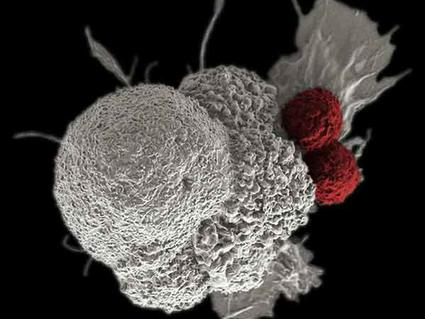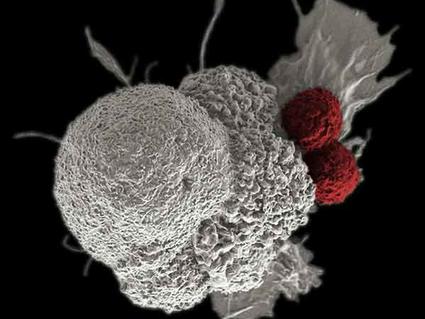Immunotherapy to Treat Cancer
Immunotherapy is a type of cancer treatment that helps your immune system fight cancer. The immune system helps your body fight infections and other diseases. It is made up of white blood cells and organs and tissues of the lymph system.
Immunotherapy is a type of biological therapy. Biological therapy is a type of treatment that uses substances made from living organisms to treat cancer.
As part of its normal function, the immune system detects and destroys abnormal cells and most likely prevents or curbs the growth of many cancers. For instance, immune cells are sometimes found in and around tumors. These cells, called tumor-infiltrating lymphocytes or TILs, are a sign that the immune system is responding to the tumor. People whose tumors contain TILs often do better than people whose tumors don’t contain them.
Even though the immune system can prevent or slow cancer growth, cancer cells have ways to avoid destruction by the immune system. For example, cancer cells may:
- Have genetic changes that make them less visible to the immune system.
- Have proteins on their surface that turn off immune cells.
- Change the normal cells around the tumor so they interfere with how the immune system responds to the cancer cells.
Immunotherapy helps the immune system to better act against cancer.
Several types of immunotherapy are used to treat cancer. These include:
- Immune checkpoint inhibitors, which are drugs that block immune checkpoints. These checkpoints are a normal part of the immune system and keep immune responses from being too strong. By blocking them, these drugs allow immune cells to respond more strongly to cancer. Learn more about immune checkpoint inhibitors.
- T-cell transfer therapy, which is a treatment that boosts the natural ability of your T cells to fight cancer. In this treatment, immune cells are taken from your tumor. Those that are most active against your cancer are selected or changed in the lab to better attack your cancer cells, grown in large batches, and put back into your body through a needle in a vein. T-cell transfer therapy may also be called adoptive cell therapy, adoptive immunotherapy, or immune cell therapy.Learn more about T-cell transfer therapy.
- Monoclonal antibodies, which are immune system proteins created in the lab that are designed to bind to specific targets on cancer cells. Some monoclonal antibodies mark cancer cells so that they will be better seen and destroyed by the immune system. Such monoclonal antibodies are a type of immunotherapy. Monoclonal antibodies may also be called therapeutic antibodies.Learn more about monoclonal antibodies.
- Treatment vaccines, which work against cancer by boosting your immune system’s response to cancer cells. Treatment vaccines are different from the ones that help prevent disease.
- Immune system modulators, which enhance the body’s immune response against cancer. Some of these agents affect specific parts of the immune system, whereas others affect the immune system in a more general way.
Immunotherapy drugs have been approved to treat many types of cancer. However, immunotherapy is not yet as widely used as surgery, chemotherapy, or radiation therapy. To learn about whether immunotherapy may be used to treat your cancer, see the PDQ® adult cancer treatment summaries and childhood cancer treatment summaries.
Immunotherapy can cause side effects, many of which happen when the immune system that has been revved-up to act against the cancer also acts against healthy cells and tissues in your body.
Learn more about immunotherapy side effects.
Different forms of immunotherapy may be given in different ways. These include:
- Intravenous (IV)
The immunotherapy goes directly into a vein. - Oral
The immunotherapy comes in pills or capsules that you swallow. - Topical
The immunotherapy comes in a cream that you rub onto your skin. This type of immunotherapy can be used for very early skin cancer. - Intravesical
The immunotherapy goes directly into the bladder.
You may receive immunotherapy in a doctor’s office, clinic, or outpatient unit in a hospital. Outpatient means you do not spend the night in the hospital.
How often and how long you receive immunotherapy depends on:
- Your type of cancer and how advanced it is
- The type of immunotherapy you get
- How your body reacts to treatment
You may have treatment every day, week, or month. Some types of immunotherapy given in cycles. A cycle is a period of treatment followed by a period of rest. The rest period gives your body a chance to recover, respond to the immunotherapy, and build new healthy cells.
You will see your doctor often. He or she will give you physical exams and ask you how you feel. You will have medical tests, such as blood tests and different types of scans. These tests will measure the size of your tumor and look for changes in your blood work.
(cancer.gov content accessed 4/20/21)

